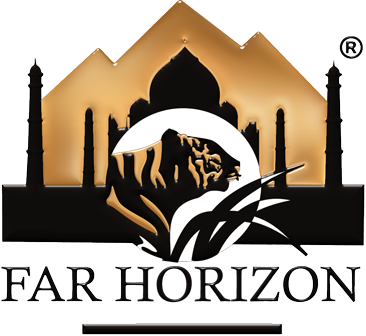Bhutan with Brahmaputra River Cruise
more_vert
Introduction
Far Horizon takes you on a unique journey through the beautiful and picturesque kingdom of Bhutan - one of the last Shangri-las of the world. This Himalayan kingdom is a preserve of the living history of the Lamaistic Buddhist culture. Immerse yourself in the unique culture of Bhutan – visit Thimphu, Punakha and Paro. See beautiful crafts at the School of Arts and Crafts and the Institute for Zorig Chusum (school of arts and crafts). Temples and monasteries abound in this beautiful land. From Bhutan we go to the glorious state of Assam - Far Horizon gives you the unique experience of exploring Assam as you cruise along the Brahmaputra River, with visits to tea plantations, Kaziranga wild life sanctuary, temples and monasteries. Experience the rich diversity of Assam as you sail down the river on the M.V Mahabaahu and meet the simple folk who inhabit this land.
Tour Highlights
- Visit the Royal Kingdom of Bhutan
- Hike to Tiger Nest Monastery in Paro
- Visit the Buddhist Monasteries
- Cruising on the Mighty Brahmaputra River in Assam
- Visit the tribal villages and tea gardens of Assam
- Amazing Birdlife
- Jeep safari, Boat Safari and Elephant Safari in the Kaziranga National Park
- Visit to Majuli island – the Largest River island in the World
Destinations Covered
Kolkata
The City of JoyKolkata (formerly Calcutta) is the capital of West Bengal and the second largest city in India (after Mumbai). This city is a daily festival of human existence, simultaneously noble and squalid, cultured decidedly futuristic.
History and Culture
The history of Kolkata is intimately related with its invention during the British rule dating back 300 years ago. Earlier known as Calcutta, it originated as a capital of British India in 1960 when East India Company dominated the country.
Jorhat
Tea Capital of IndiaJorhat is the cultural capital of Assam; home to the largest Tea research station, there are as many as 135 tea gardens in Jorhat.
Sivasagar
Imprints of Ahom DynastySivasagar, previously spelled Sibsagar, is a city in the Sivasagar District of Assam, about 360 kilometres northeast of Guwahati. It is the headquarters of the Sivasagar district. This city is surrounded by the Dehing rainforest, where the Dihing and Lohit rivers meet.
Majuli
World's Largest Fresh Water IslandMājuli or Majoli is a river island in the Brahmaputra River, Assam and in 2016 it became the first island to be made a district in India. It had an area of 880 square kilometres (340 sq mi) at the beginning of the 20th century, but having lost significantly to erosion it covers 352 square kilometres (136 sq mi) as at 2014. Majuli has shrunk as the river surrounding it has grown. Majuli is currently listed as the world's largest river island in the Guinness Book of World Records.
Kaziranga National Park
The haven of one-horned rhinosA UNESCO World Heritage site, Kaziranga is famous as the abode of the one-horned rhinoceros. Made unique with a vibrant, well preserved and sustained ecology this park has a very versatile bio diversity which makes Kaziranga National Park a very important and popular tourist destination.
Guwahati
The Gateway to the North-EastGuwahati is the largest city in Assam and Northeast India. The slow, meandering Brahmaputra River is a focal point of the downtown while the lush hills of the Shillong Plateau provide a verdant backdrop for the suburbs.
History and Culture
There is a magical aura that still lingers over the ever-expanding city. The demon king Narkasura is said to have built this ancient city. Another reason for Guwahati's charm is its being the ancient 'Kamrup', the birthplace of Kamdeva, the God of Love.
Thimphu
The Beating Heart of BhutanIt is a charming capital city that is nestled in the Himalayas with the magnificent sites of the Raidak River which passes through it which is often called as the Thimphu River.
Punakha
The Land of Red RicePunakha is one of the 20 districts located in Bhutan. This place was the previous capital of Bhutan up until 1955 after which the capital was changed to Thimpu. This place is in a close proximity to Thimpu and one can easily reach here by means of car. This place is usually warmer in winter and colder in summer. Located at the height of 1200 m this place is known for its extensive rice cultivation.
Paro
The Gateway to the Last Himalayan KingdomThis beautiful Paro valley is about 2250m above the sea level. Paro is believed to be one of the first valleys to have received the influences of the Buddhism. The wide and fertile Paro valley has both an ancient and a modern face.
Detailed Itinerary
- Day 1 Arrive Kolkata
- Day 2 Kolkata
- Day 3 Kolkata - Neamati Ghat / Board MV Mahabaahu
- Day 4 Sibsagar/ Home hosted lunch
- Day 5 Majuli island visit/ Mishing village visit
- Day 6 Boat safari
- Day 7 Weaver’s village at Bishwanath Ghat/ Sail to Silghat/ Tea Estate visit and/or Jute Mill
- Day 8 Kaziranga National Park/ Sail towards a Deserted Island
- Day 9 A village visit/ Full day sail/Peacock Island
- Day 10 Guwahati fly to Paro by flight & Drive to Thimphu (51 Km. / 32 Miles / 2 Hrs)
- Day 11 Thimphu
- Day 12 Thimphu – Punakha
- Day 13 Punakha – Paro
- Day 14 Paro
- Day 15 Paro –Kolkata


























